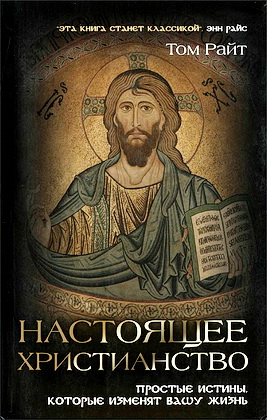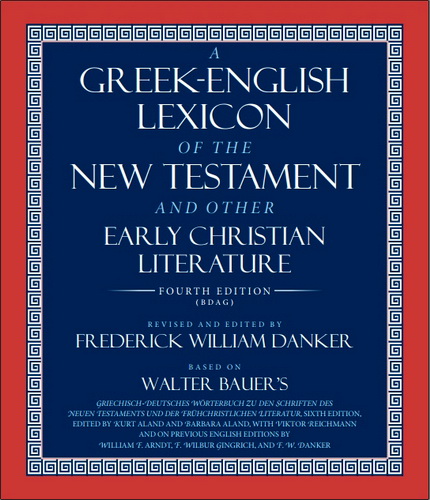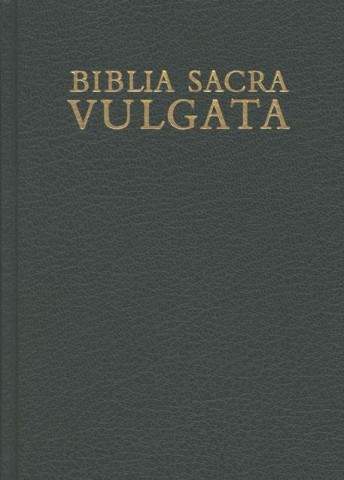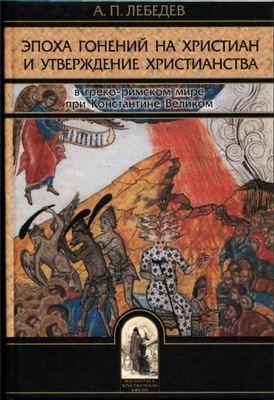
A Greek-English lexicon of the New Testament

The history of dictionaries specifically intended for the Greek New Testament opens with a Greek-Latin glossary of seventy-five unnumbered pages in the first volume of the Complu- tensian Polyglot of 1522, including the words of the New Testament, Ecclesiasticus, and the Wisdom of Solomon. The incompleteness, inaccuracy, and elementary character of this glossary reflect the low state of Greek studies at the time it was published, but it was the first in a long and useful succession of New Testament lexical works.
The first NT dictionary with scholarly pretensions was the Lexicon Graeco-Latinum in Novum Testamentum by Georg Pasor, published in 1619 at Herborn in Nassau. Ludovicus Lucius put out his Dictionarium Novi Testamenti at Basel in 1640 with its words arranged for the first time in strict alphabetic order instead of by word-roots.
Many faults of contemporary NT lexicons were pointed out by Johann Friedrich Fischer in his Prolusiones de Vitiis Lexicorum Novi Testamenti (Leipzig, 1791); among these defects were neglect of the smaller words whose frequent use makes them extremely difficult to analyze and classify, the inclusion of too few or too many meanings, lack of logical arrangement, and insufficient attention to the background of NT words in Hebrew, the LXX, and secular Greek.
A Greek-English lexicon of the New Testament and other early Christian literature
FOURTH EDITION
GRIECHISCH-DEUTSCHE S WÖRTERBUCH ZU DEN SCHRIFTEN DE S NEUEN TESTAMENTS UND DER FRÜHCHRISTLICHEN LITERATUR, SIXTH EDITION, EDITED BY KURT ALAND AND BARBARA ALAND, WITH VIKTOR REICHMANN AND ON PREVIOU S ENGLISH EDITION S BY WILLIAM F. ARNDT, F. WILBUR GINGRICH, AND F. W. DANKER
The University of Chicago Press | Chicago and London
2021 University of Chicago Press - Number of pages 1078
The University of Chicago Press | Chicago and London
2021 University of Chicago Press - Number of pages 1078
A Greek-English lexicon of the New Testament and other early Christian literature - AN INTRODUCTION TO THE LEXICON OF THE GREEK NEW TESTAMENT
The second edition of the Griechisch-deutsches Worterbuch zu den Schriften des Neuen Testaments und der ubrigen urchristlichen Literatur of 1928, which reached its fourth edition in 1952, contained in its opening pages a short ‘introduction’ to its use. The exigencies of space and the desire to keep the price of the book as reasonable as possible caused the omission of these pages in the later editions. This was deplored by certain scholars whose judgment on the lexicon was favorable, among them ADeissmann in the Deutsche Literaturzeitung (1937), p. 520. Their ranks were joined by AFridrichsen, the editor of the series ‘Coniectanea Neotestamentica,’ who declared himself ready to give the introduction a new home in his series. The publishers also gave their consent, for which they deserve our gratitude. Accordingly, it is here presented once more, with some corrections and a supplement.
The earliest Christian literature, with which this book deals, is made up of a number of writings which were composed in the Greek language. It is not the Greek of more ancient times, least of all that of the Golden Age of Athens which is now taught in the institutions of higher learning and occupies the most prominent place in the dictionaries used in them. A comparison reveals, on the contrary, differences in phonology and morphology, in syntax and style, and, not least of all, in the vocabulary as well. These divergences are too plain to have remained unnoticed. When in the seventeenth century the learned controversy about the purity of New Testament Greek arose, the so-called ‘Hebraists’ tried to explain the peculiarities of this Greek as due to the influence of the Hebrew. Although they shot wide of the mark in some of their conclusions, their recognition of the special character of the New Testament language constituted a strong impetus in the right direction, when compared with the conception of their opponents, the ‘purists,’ whose attempt to demonstrate that the Holy Spirit inspired the New Testament writers with as fine and pure a Greek as any classical author ever wrote could not maintain itself indefinitely.
However, neither did the Hebraists achieve a real grasp of the situation. This was due largely to the fact that philology at that time knew the Greek language only from its literature and consequently fell into the error of equating Greek with the Greek literary language. In addition, the writings contemporaneous with the New Testament—upon which they based their judgments—were deeply colored by Atticism, an artificial revival of the classical language. This prevented recognition of the truth that Greek had been developing since the days of the Attic orators and Plato, as any living language must.
This judgment, one-sided to say the least, was destined to hold the field as long as formal literature was almost the only source of our knowledge. But the situation took a decided change when, in the 1890’s, there began to appear in great abundance those volumes which make available to the learned world the Greek papyri found in Egypt. As a result, interest was awakened, too, in the earlier isolated publications of a similar nature, and it spread to the other non-literary sources—the ostraca (fragments of broken pottery which served as cheap writing materials) and inscriptions. In all of them we have witnesses of the speech of daily life, especially in its colloquial form, in so far as they avoid the influence of custom, formula, and school—and infinitely many do just that! Here, at length, was discovered the proper background for a truly scientific view of the language of the oldest Christian literature. The honor of having been discoverer and pathfinder in this field belongs to Adolf Deissmann, who, beginning in 1895, demonstrated to us more and more clearly— both in numerous single investigations and in comprehensive works—that our literature on the whole represents the late Greek colloquial language, which, to be sure, some authors used with more literary polish, others with less. The upper and lower limits for our literature in this respect are marked by Hb, MP01, and Dg on the literary side, and Rv on the colloquial.




Комментарии (2 комментария)
Огромное спасибо за лучший лексикон по греческому Новому Завету!
Большое спасибо за полезную книгу!